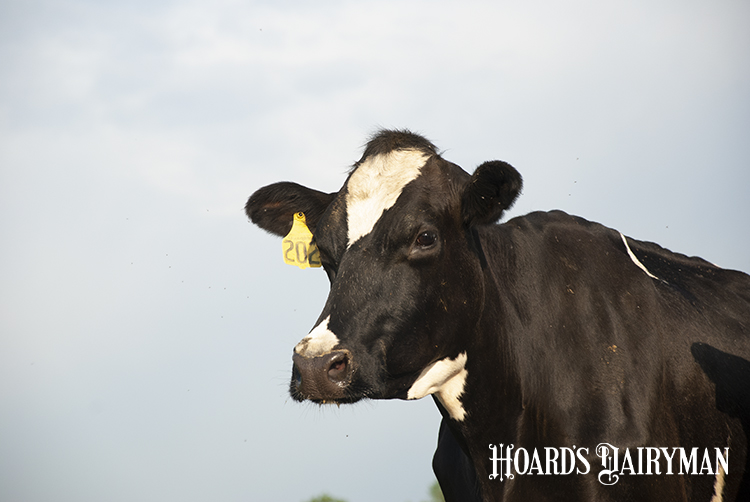
Most people who have spent time working with fresh cows would agree that clinical hypocalcemia, often known as milk fever, becomes more of a problem as cows get older. Why that is the case may not be common knowledge, though.
Jesse Goff, a veterinarian and professor emeritus at Iowa State University’s College of Veterinary Medicine, explained the reasons why hypocalcemia affects more mature cows during the May Hoard’s Dairyman webinar.
He started out by defining clinical and subclinical hypocalcemia. Clinical hypocalcemia is what we consider milk fever and is defined by a blood calcium level below 4.5 mg/dL. A normal blood calcium level is between 9 and 10 mg/dL.
Cows with this level of hypocalcemia are often unable to rise to their feet. They experience a severe drop in dry matter intake, no rumen motility, a high degree of immune suppression, and reduced milk production. Clinical hypocalcemia affects 1% to 5% of cows in the U.S.
The exact blood calcium level that constitutes subclinical hypocalcemia is debatable, but Goff used the cutoff of less than 8 mg/dL. This condition impacts anywhere from 25% to 65% of cows. Even though the symptoms are less severe, cows still face depressed rumen motility and dry matter intake, immune suppression, and reduced milk production.
Blood calcium levels fall in almost every good milk cow because cows put out a lot of calcium in milk. Goff pointed out that cows are one of the few mammals that go from making no milk to a lot of milk on day one. He also noted that colostrum, the first milk made by the cow, contains two times the calcium compared to milk. In all, a cow can lose 30 to 35 grams of calcium at calving.
Even though this calcium drain occurs in nearly every cow, not all cows get clinical hypocalcemia. That’s due to parathyroid hormone.
“The beauty of the cow, and most mammals, is that we have parathyroid glands in our neck, which makes parathyroid hormone,” Goff explained. That parathyroid hormone (PTH) has two main functions. One is that it causes the bone to release its stored calcium.
The PTH also affects the kidney, reducing the amount of calcium leaving the body through urine. While minimal calcium leaves the cow that way, PTH more importantly initiates the conversion of vitamin D to 1,25-Dihydroxyvitamin D, which is necessary to absorb calcium from the diet. Without it, the cow will not absorb much.
Cows that can pull calcium from the intestinal track and the bone often return back to normal calcium levels within a fairly short time period, between 12 to 24 hours after calving. Unfortunately, calcium homeostasis doesn’t work in all cows, and one main reason goes back to age. As cows get older, they lose vitamin D receptors in the intestine. These mature cows also have fewer osteoclasts or cells in the bone capable of responding rapidly to PTH.
While milking more young cows is one way to avoid this, Goff said, “I am proud of the dairy industry for increasing the age of cows on farms. That is a good trend.”
Still, we need to manage the risk of hypocalcemia in dairy herds, especially among older cows. To learn more about the strategies Goff recommends, listen to the May Hoard’s Dairyman webinar, “Hypocalcemia and the transition cow.” This webinar was sponsored by Boehringer Ingelheim Animal Health.








